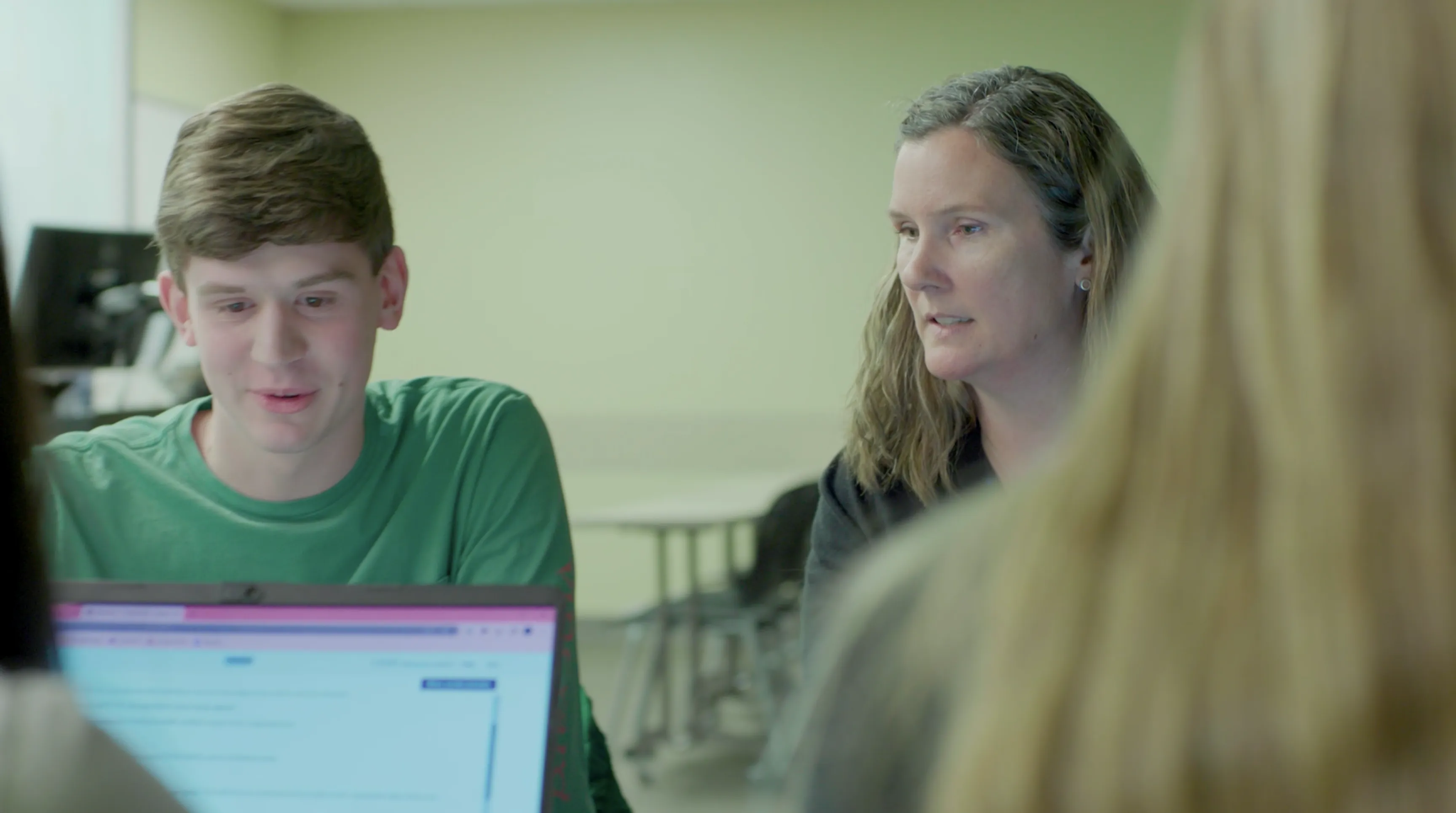My Account Details
How Indiana University built an Inclusive Access program from the ground up
The Inclusive Access program delivers digital learning resources to students, at a significantly reduced cost, on or before the first day of class.
Brad Wheeler doesn’t just talk about Inclusive Access — he evangelizes about it. As a professor at Indiana University (IU) Bloomington’s Kelley School of Business and the university’s former vice president for IT, he’s been spreading the good word about it since 2009. That’s when he went to the Consumer Electronics Show, noticed the sea of next-gen portable reading devices, and saw in them the future of education at IU.
Energized, he returned to Bloomington with a message for his colleagues: Let’s start working on the future today.
Blazing a new path forward
Over the next few months, Wheeler shared his vision with students, faculty councils, deans and other stakeholders across all of IU’s eight campuses. The idea was simple but revolutionary: Deliver digital course materials to students on the first day of class through a learning management system. Costs would be low and covered through student fees and financial aid. Educators would have the autonomy to choose the materials and formats they deem best for their class.
We now have a name for that type of program: Inclusive Access. Designed by institutions and guided by the U.S. Department of Education, this program delivers digital learning resources to students, at a significantly reduced cost, on or before the first day of class. Learners can choose the resources that work best for them or, if they prefer, opt out of the program altogether. Schools and publishers began adopting it in 2016, and today, McGraw Hill offers its materials through Inclusive Access at more than 1,500 schools.
But back in 2009, the concept was still so new, and naturally, Wheeler’s colleagues had questions. Would digital content work across disciplines? Could it accommodate students who have assistive needs? Would it work the same for in-person and remote learning? Could it actually save students money? How exactly would the school get its hands on all the digital content needed to pull this off?
That last question posed a unique logistical hurdle, because at that point, there was no business model the university could replicate. IU was on the “bleeding edge” of this type of program, as Wheeler describes it. So the school ended up creating its own model patterned after the way it purchased campus-wide software from Microsoft.
The next hitch? Finding a publisher that had the breadth and depth of quality content, the technical capabilities and the willingness to partner on building something from the ground up. McGraw Hill was the first to raise its hand.
With a publisher on board, and buy-in from students, faculty and administrators, IU launched a small pilot, called eTexts, in 2010. It was by all measures a success. In January 2012, the university rolled out a full-scale version, and every year since has added more sections and publishers. The cost savings have been significant: Since its inception, eTexts has saved students more than $50 million.
“The key thing we’ve proven is that this shift to electronic access works,” Wheeler says. “It works in Italian. It works in chemistry. It works in business. It works in law school. Because of that, it didn’t get pigeonholed. We were able to raise all boats at the same time across our different campuses, and principally by word of mouth. I think that’s what drove the numbers on every graph we have. Whether it’s a graph of the number of students using it or credit hours accumulated or volumes consumed, it’s been a march to the northeast corner over the past 10 years."

Unlocking creative ways to support learners
Looking back, the university couldn’t have picked a better time to launch its eTexts program. Cost was a pain point and, for some students, a barrier. Digital content and handheld reading devices meant learners could receive high-quality content for less.
It also helped that the first generation of digital natives were starting to enter college around the time eTexts was created. These students were more than ready to consume course materials electronically, and they understood how to interact with content online.
Though some faculty were initially skeptical, many more have been delightfully surprised by the benefits of the technology. For example, Angie Perry, a senior lecturer at the business school, likes how she can customize the content so students have access to topical, real-world case studies and are given plenty of chances to sharpen their collaboration skills.
The technology also saves her time. Perry teaches multiple sections of the same courses and uses McGraw Hill’s Connect platform to build out a course. “Then I can copy it right over into my other sections,” she says. Plus, assignments and quizzes are automatically graded, with the results sent immediately to her and the students.
But Perry also receives valuable, data-driven insights on her students’ performance that tell a more complete picture than grades can. She’s able to use this information to personalize the course for her students. “For example, I can see if 90 percent of the students missed a particular question on an assignment,” she says. “Then I’ll know, this is a concept we need to look at again as a class, and so I will probably plan to talk about that in class the next day. Or if it’s just one or two students who are struggling, then I can individually assign them additional practice.”
When it comes to technological advances, Perry says, there are two schools of thought: embrace them or run in the opposite direction. "I think as educators in the classroom, embracing technology and its advances are to our advantage.”

Eyeing the future
So much has changed since Wheeler’s lightbulb moment at the Consumer Electronics Show in 2009. But one thing hasn’t wavered: his excitement for what’s next for learners and educators. He believes education is “an endless frontier.”
“Some things are pretty timeless, but the way in which students want to engage or learn a lesson, that continues to evolve,” he explains. “That’s why we need a continuing line of innovation in education products, whether that’s digital representations of Plato or interactive quizzes that gauge how well a student understands what they’re reading.”
Although eTexts is now firmly entrenched in the IU experience, Wheeler continues to be one of its main evangelists. In fact, he hopes the school’s journey can help inspire other institutions that are considering building a similar program.
To that end, the university has created a free e-book filled with practical tips and lessons learned. It’s available to everyone on the school’s website. Ideally, the advice would help people who are in a similar position as Wheeler was 14 years ago. “These programs can be self-propelled once the momentum starts,” he points out. “Universities often find it difficult to find that first step or overcome pushbacks from particular stakeholders. But you just have to plow into those challenges with those who champion Inclusive Access.”